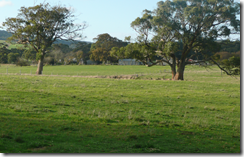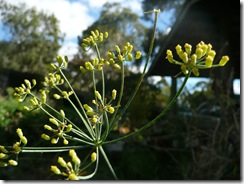Here are some real news items about what people are doing in the world to help themselves reduce their dependence on foreign foods, oil, agri-business and to improve their nutrition at the same time.
| | http://www.youtube.com:80/watch?v=dsK3V04LAvw |
International day for Biodiversity in Africa
Read this article too, from 'Biodiversity International' | Seeding Deep Democracy - Vandana Shiva |
| | |
| Seedsavers Australia trailer for 'Guardians of the Seed' | Vandana Shiva - Reclaiming economy, culture and politics |
Here I am sitting here writing this stuff at 8pm on a Saturday night and you may well ask why am I not out on the town or even why am I not watching TV with Roger or just relaxing. It is because I just had to get into this - it is THE most important thing in the world today, I think. That is making a big claim but I have written about it from various angles before and I will keep on doing it.(Wild Food Biodiversity, Sowing the Seeds of Civilisation, Saving Seeds, Saving Lives) I find it very exciting, but also frustrating,that people in countries such as Africa and India are getting on with these things while we in Australia and other western countries are way behind in our thinking. Maybe by 2010 and the Year of Biodiversity, we will have caught up (and pigs might fly too!).
Let me just assume that you agree with me that biodiversity is a good thing to have. For a minute, then, lets look at how it came to be, in the first place. As evolution was taking place over the last few million years, every organism created, whether from seed or egg, for example, has had a unique set of genes - unlike any other that has ever existed. Now that is a lot of genes and a lot of combinations of genes, when you think of millions of years and many millions of generations, for some organisms. Every time 2 individuals cross, a new individual is therefore formed. After all these years of this happening you can imagine that, like in the game 'Chinese whispers', the last individual created would be nothing like the original, thousands or millions of generations before. And sometimes this difference is enough to make a new species but sometimes, if only a few of the genes are different, it becomes a new variety of, for example, bean or apple or bacteria or fish etc. Each development has only been possible because of the existence of the many before.
Now, if we go on the way we are at the moment - destroying not just varieties but actual species at an ever increasing rate (read Greg's recent post about this) you can see that whole sections of the gene pool are being erased. Once they are gone, we can never go back to their forbears and re-evolve them. Those genes specific to those species are extinct. So, evolution gets big holes in it, like a web with whole sections missing and unable to be re-connected, ever. If varieties disappear in this way so the next generation of beans or apples or bacteria or whatever can only be formed from an ever-decreasing supply of genes, until the gene pool may be so small that no viable off-spring are possible and then the whole species goes. Or there are no genes available to allow for adaptation to changing conditions - maybe only cold-hardy beans are left in a world heating up, for example. Because beans evolved from other pre-bean life-form which has now evolved so much it no longer exists itself, we cannot get the heat-resistant bean back! We are stuffed, big time! No beans...then no apples...no bananas..etc etc.
To keep evolution going forwards so it can adapt to climatic changes and so on, we need to keep everything we can reproducing and throwing up new combinations of genes which will select for new situations. By doing a simple thing like saving seeds from the strongest / most productive / earliest/ latest/ fastest / best tasting etc etc plants in our vegetable gardens we are ensuring that all those genes are being kept alive. This year I want us, as a seedsavers group, to start mixing our seeds together before redistributing them again. For example, we all have Kath's fabulous broccoli that is fast, has a big main head and lots of side shoots of excellent quality. If I just grow a few each year, they only have the chance to cross with each other and this is OK for a while. But ideally, I would like to mix my seeds in with another 4 or 5 people's seeds from the same variety of broccoli, all in Adelaide, so the genes get some new input each year but are still being selected for similar conditions. Already I have done this by accepting and planting out some seedlings from Sally in my garden group, who grew Kath's broccoli last year and saved the seeds. Now that we grow some of the same varieties we can start to really make use of the size of our group for this type of endeavour.
Somehow I wish I hadn't started on this now because I am too tired to think any more (now its 10pm) and am going to retire to watching The Bill !! Trouble is, I can never go back and get the same thread going again another day, just like with evolution, you can't go back! Oh well. I have probably said enough anyway. Now the darn thing won't align properly.Sorry!

























































